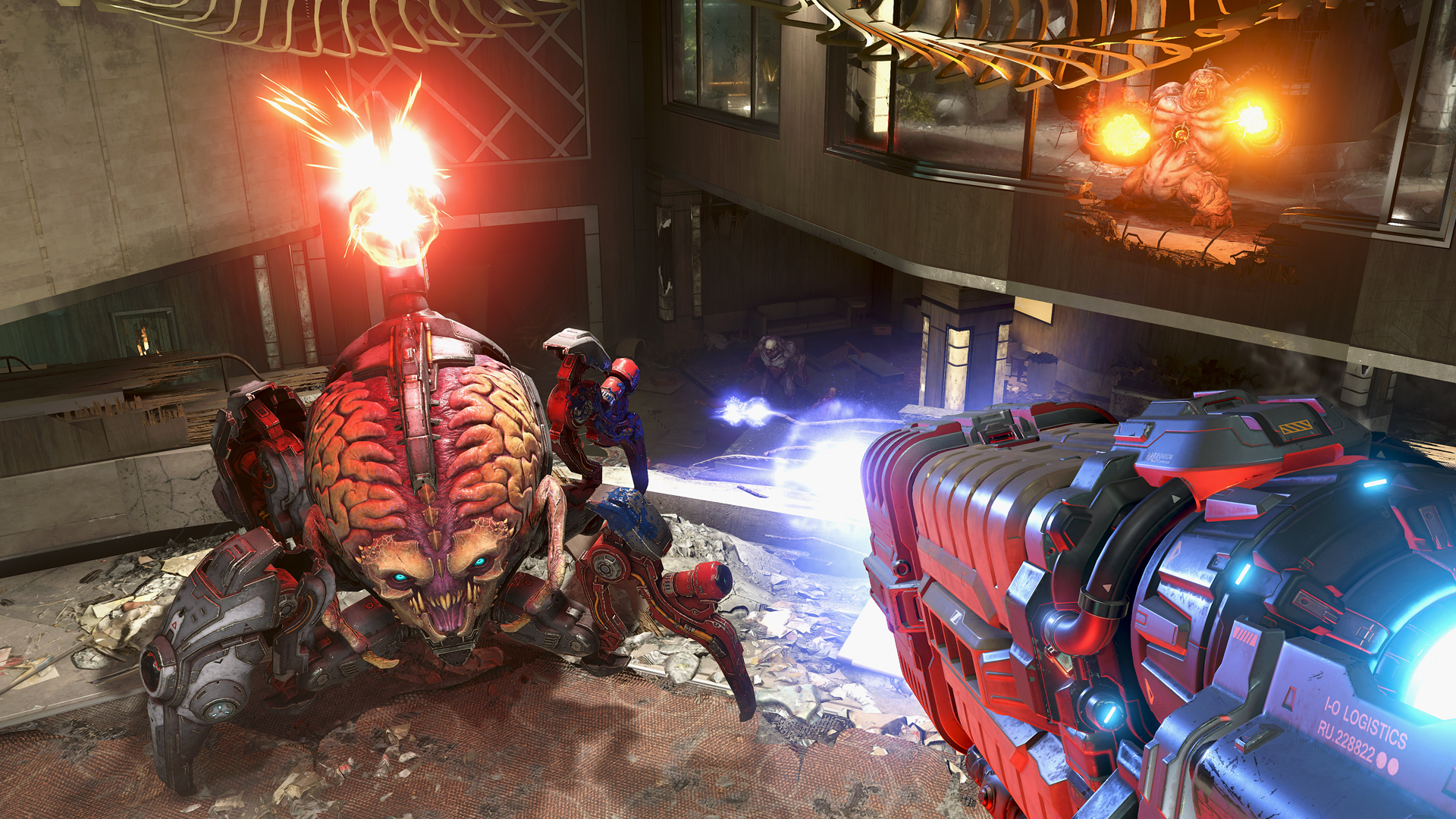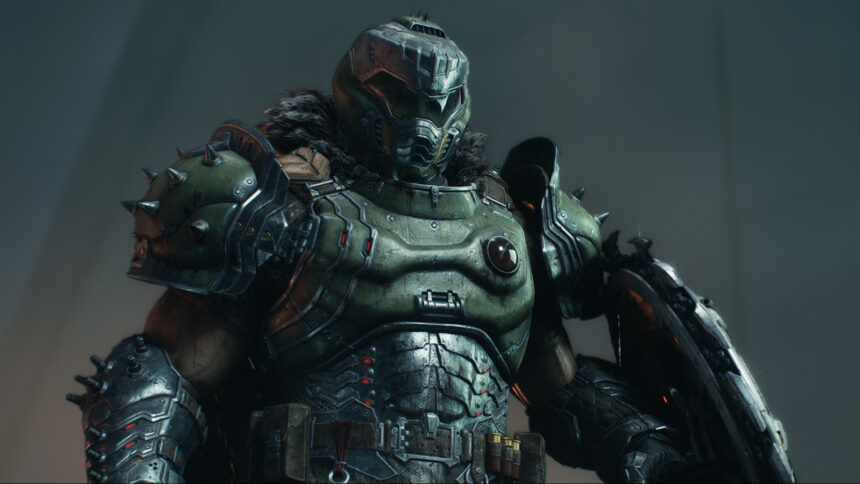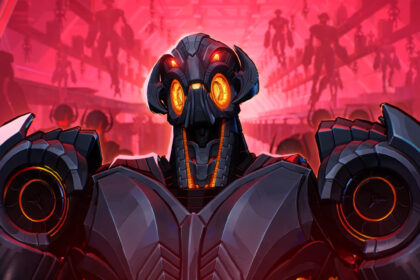I’m not usually susceptible to sudden flashes of feeling ancient, but counting the number of years since id rebooted Doom did the job. 2016 was a long time ago, so long that it predates me owning a gaming PC. Back then, I was still shackled to consoles for anything more demanding than Team Fortress 2, so that’s where I picked up Doom ’16. It was OK, but I didn’t see what all the hype was for, and didn’t even like it enough to see it through.
After finally getting a capable PC a few years later I picked Doom back up, and this time it was sublime. Every element of id’s reimagined FPS that I’d chafed against with a PS4 controller—its speed, vertical arenas, emphasis on hot-swapping guns—created beautiful music with the precision of a mouse and keyboard. Doom ’16 and its follow-up Doom Eternal were undeniably PC games first.
Doom: The Dark Ages is a console game first.
The Dark Ages is a more grounded (literal and figurative) take on modern Doom. As I wrote in my 80% Doom: The Dark Ages review: “The Dark Ages is the trilogy’s sharpest zag yet—recasting the Slayer from a meaty fighter jet, ducking and dashing past the hordes of Hell, to a stalwart tank, smashing shield-first into the action.”
The new combat loop revolves around the Shield Saw, a new block button permanently bound to right-click. The shield feels great, and the ability to block incoming damage changes the calculus of Doom’s crowd control, but playing with mouse and keyboard, I was put off by new constraints tailored around a slower, thumbstick-y experience.
I can’t unsee how profoundly horizontal The Dark Ages is. This iteration of the Slayer can sprint, but the dashes and double jumps of Eternal are gone, as are spaces that take advantage of that mobility. He’s functionally a Call of Duty protagonist, and not the kind with a cool jetpack.
The arenas of The Dark Ages are wide, flat battlefields with fewer death pits and high grounds than the prior games. A dull change if you ask me, but one that makes a lot of sense for the console version: A Doom with less jumping is a Doom that asks you to take your thumb off the stick less often.
Similarly, The Dark Ages has way fewer Cacodemons, Revenant stand-ins, or other airborne threats that necessitate looking up. Demons don’t give chase as much as they used to. Lines of shielded Hell soldiers stand still, patiently waiting to be blown up while a Mancubus stands its ground launching plasma balls. Despite the presence of precision weapons, The Dark Ages does not demand snappy aiming or targeting weak points. With a mouse, nailing shots that used to blow off a Carcass’ cannon in Eternal feels like slamming the gas pedal on a car just to top out at 30mph.
Controller comfort would also explain why The Dark Ages completely changed how guns work. Gun upgrades have moved away from hot-swappable mods (like Eternal’s auto shotgun/grenade launcher combo) in favor of passive upgrades.

Free of the mod system’s complexity, and having folded the chainsaw’s role into standard melee, id was able to dedicate a button to swapping between two guns of the same ammo type. It’s a significant win for controller players, dramatically reducing time spent looking at a weapon wheel.
The old way of hot-swapping guns with the number keys was always perfectly comfortable on a keyboard, so PC players see no benefit from streamlining. Other simplifications are way less subtle—between fights, The Dark Ages rarely puts you in any danger of falling off a cliff or even slightly missing a jump, a concern made obvious by how its new “shield jump” mechanic (where you throw the shield across certain gaps and press a button to leap toward it, seen below) is an automatic escort from one point to another.
If you manage to fall off the world, you’re teleported back without even a health penalty—a far lighter touch than Doom ’16, which straight up killed you.
The result is, I think, the least thrilling Doom of id’s modern trilogy, but I can’t deny how much better The Dark Ages plays on a controller than Eternal or even the mechanically simpler Doom ’16.
Through no small sacrifice, id no longer crowds its buttons with multiple types of grenades, a sword, a flamethrower, and an awkward d-pad action just to swap weapon mods. Wide arenas and that ever-present block button compensate for slower thumbstick turn speeds. The Dark Ages gives players the room to take a mental snapshot of the action in a way that was less accessible with Doom 16’s claustrophobic hallways and Eternal’s finger gymnastics.
I think id went overboard with the streamlining—maybe inspired by The Dark Ages being a Game Pass product first and foremost—but the beauty of id making these FPSes so different from each other is that each one is destined to have its staunch defenders for years to come. Personally, I’m planting my “Eternal was peak” flag and hoping the next chapter of Doom is tailored around a keyboard.
Read the full article here










